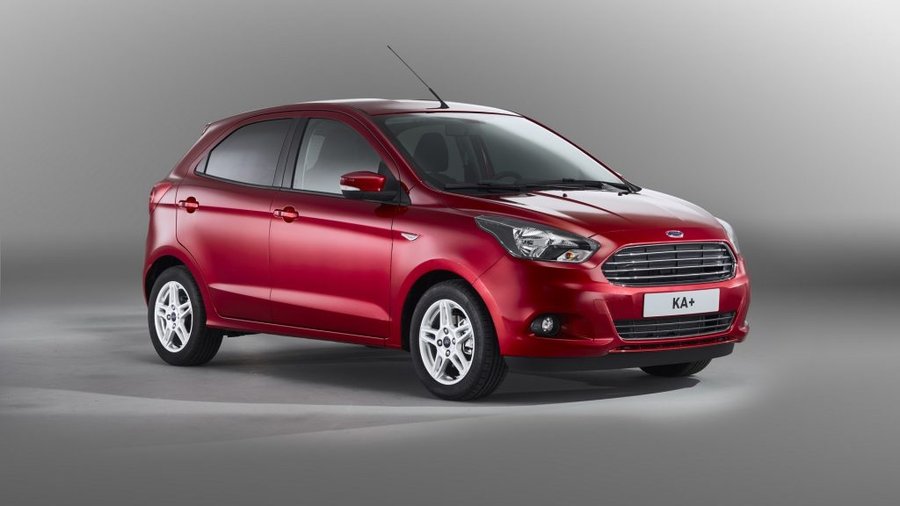India-Made Ford Ka+ (European Spec Ford Figo) Unveiled

Replacing the chic three-door Fiat 500-based Ford Ka, the new five-door Ford Ka+ banks on space and practicality to appeal to customers. It is identical to the Ford Figo sold in India, and is even manufactured and exported from Ford India’s plant in Sanand, Gujarat. However, Ford has made internal changes to suit European conditions.
For instance, the ride height is lower than the Ford Figo, it has a re-engineered front subframe, tweaked steering, dampers, springs, and a new anti-roll bar in the front. It also gets new engine mounts and a revised rear torsion beam axle. Ford has also given it low-rolling-resistance tires for better fuel economy, as well as optimized lower front spoiler lip and grille openings for better aero efficiency.
The Ford Ka+ is based on Ford’s global small-car platform. It is slightly shorter than the Ford Fiesta in overall length, but 29 mm taller. Ford claims that it provides class-leading front headroom and best-in-class legroom for rear passengers. It has 270 litres of luggage space which can be increased by folding the 60/40 split rear seats, as well as 21 stowage locations throughout the cabin.
As for equipment, it’s comes standard with front power windows and ORVMs, six airbags, central locking, electronic stability control (with hill start assist) and a speed limiter. The Zetec variant will add a leather-wrapped steering wheel, cruise control, heated front seats, auto climate control, SYNC system, 15-inch alloy wheels, power rear windows, heated ORVMs and rear parking sensors.
The Ford Ka+ packs a 1.2L Ti-VCT four cylinder petrol engine available in two power states: 70 hp and 85 hp. It is paired to a 5-speed manual as standard, and capable of a combined fuel consumption of only 5 liters / 100 km (20 km/l) and CO2 emissions of 114 g/km.


